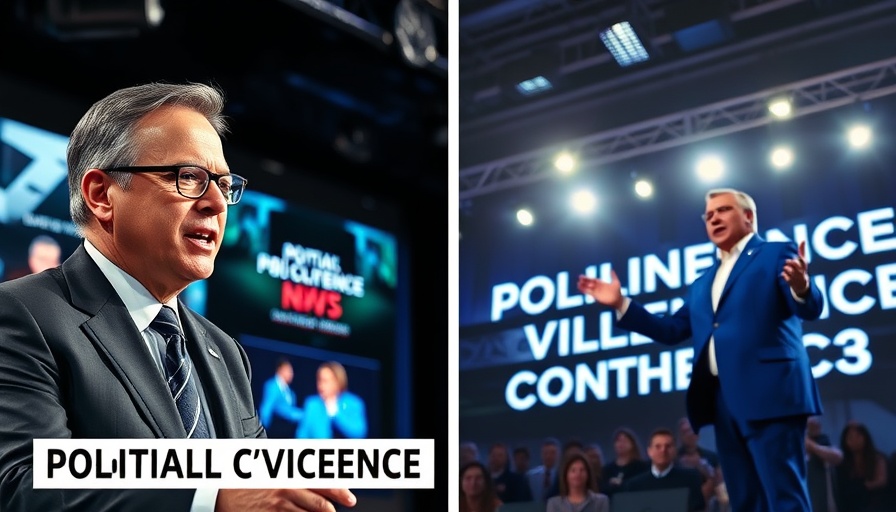
Understanding Trump's Condemnation of Political Violence
In a recent public statement, former President Donald Trump condemned political violence, a reaction seen as timely given the tumultuous atmosphere in U.S. politics. His remarks aimed to distance himself from the chaos that has sometimes marked public demonstrations and political disagreements across the nation. However, it's noteworthy that Trump's rhetoric did not address or mention the specific attacks directed at Democrats, leaving many to question the comprehensiveness of his condemnation.
Political Climate Leading to Growing Violence
The surge in political violence in the U.S. is a concerning trend that has raised alarms among politicians, law enforcement, and the public alike. Over recent years, instances of civil unrest, threats against public officials, and violent altercations at rallies have become more frequent. According to some analysts, this escalation can be attributed to a divisive political climate fueled by polarized media narratives and social media echo chambers.
The Implications of Selective Condemnations
Trump's selective condemnation not only highlights his political strategy but also reflects deeper societal divisions. While he decries violence in general, his failure to address violence against certain groups creates a narrative that can inadvertently encourage discrimination and division within political discourse. Many critics argue that such actions could embolden extremist groups who feel validated by the tacit endorsement of political violence against their opposition.
Parallel Example: The Response to January 6th
Consider the events of January 6, 2021, when a mob stormed the Capitol. Trump's response—or lack thereof at various points during the aftermath—was scrutinized heavily. Many felt that his delayed condemnation gave a green light to his supporters, further fragmenting the country's political landscape. This example poignantly illustrates the consequences of political leaders failing to uniformly denounce violence, regardless of the political affiliations of the victims.
Future Trends: The Danger of Discord
As we look ahead, the troubling trend of political violence could worsen if leaders continue to selectively condemn acts based on their affiliations or biases. Experts warn that without a comprehensive and unyielding stand against all forms of violence, the fabric of democracy may fray. Communities across the nation could become battlegrounds of ideological conflict, further isolating people into camps.
What Can Be Done? Addressing the Roots of Violence
To counteract political violence effectively, it is essential that both lawmakers and the public understand and address its root causes. Initiatives that aim to foster civil discourse, promote dialogue between conflicting parties, and develop community-based programs to prevent violence can play significant roles. Furthermore, social media companies also have responsibilities to curtail hate speech and misinformation that can incite violence, thus ensuring a safer environment for political discussions.
The Human Cost: Personal Stories Behind the Headlines
Beyond statistics and political rhetoric, the human stories behind political violence paint a harrowing picture. Many individuals, families, and communities have been irreparably affected by acts of violence stemming from political disagreements. Understanding these stories is crucial, as they remind us of the personal stakes involved—highlighting the real consequences of political turmoil beyond the headlines.
Conclusion: A Call for Unity and Comprehensive Action
Ultimately, the call to confront political violence must be met with sincerity from all corners of the political spectrum. By acknowledging the multifaceted nature of political violence and committing to consistent condemnations, leaders can help create a safer environment. American citizens, regardless of their political affiliations, must unite against violence to preserve democracy and foster a culture of tolerance and respect.
 Add Element
Add Element  Add Row
Add Row 



Write A Comment